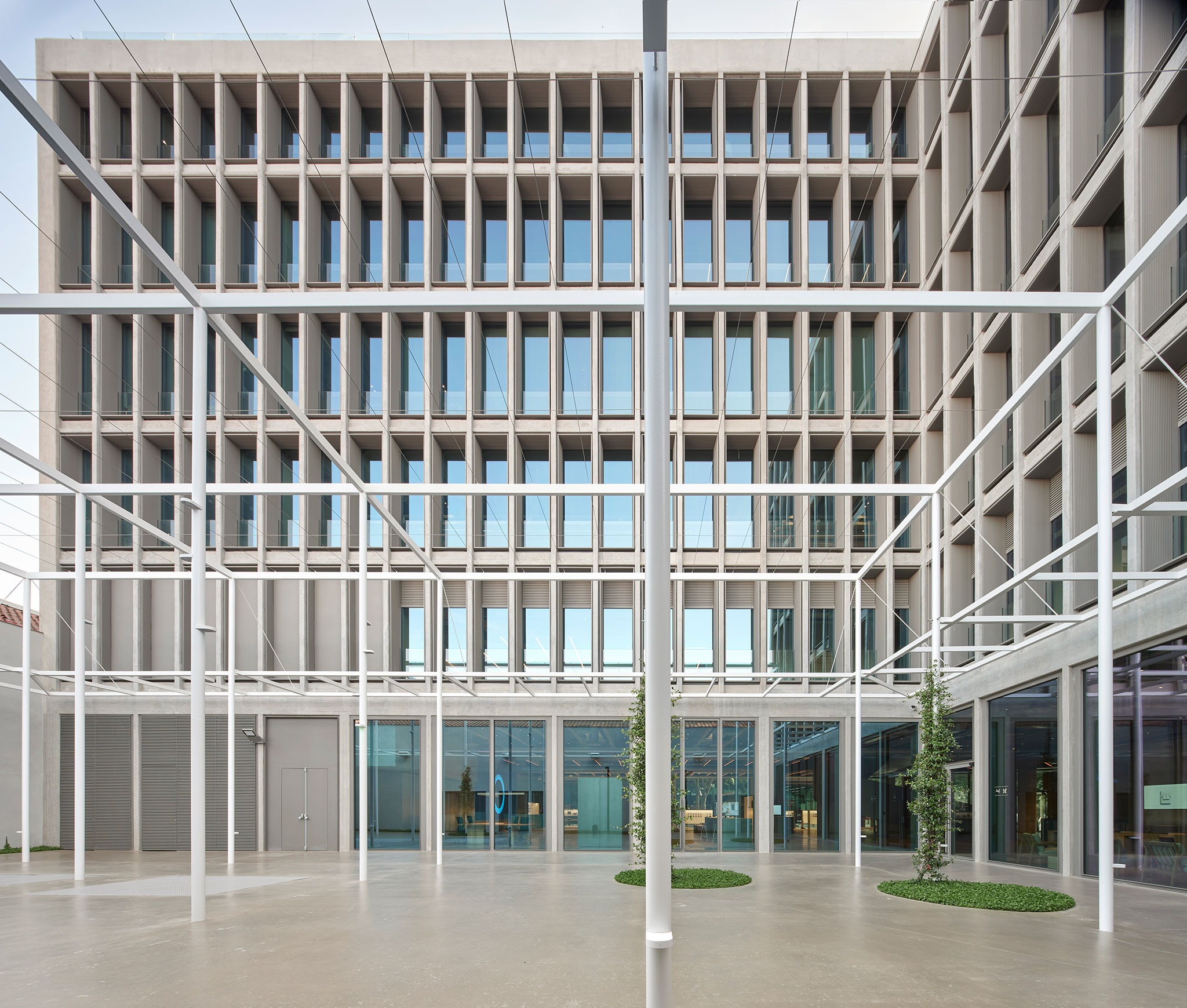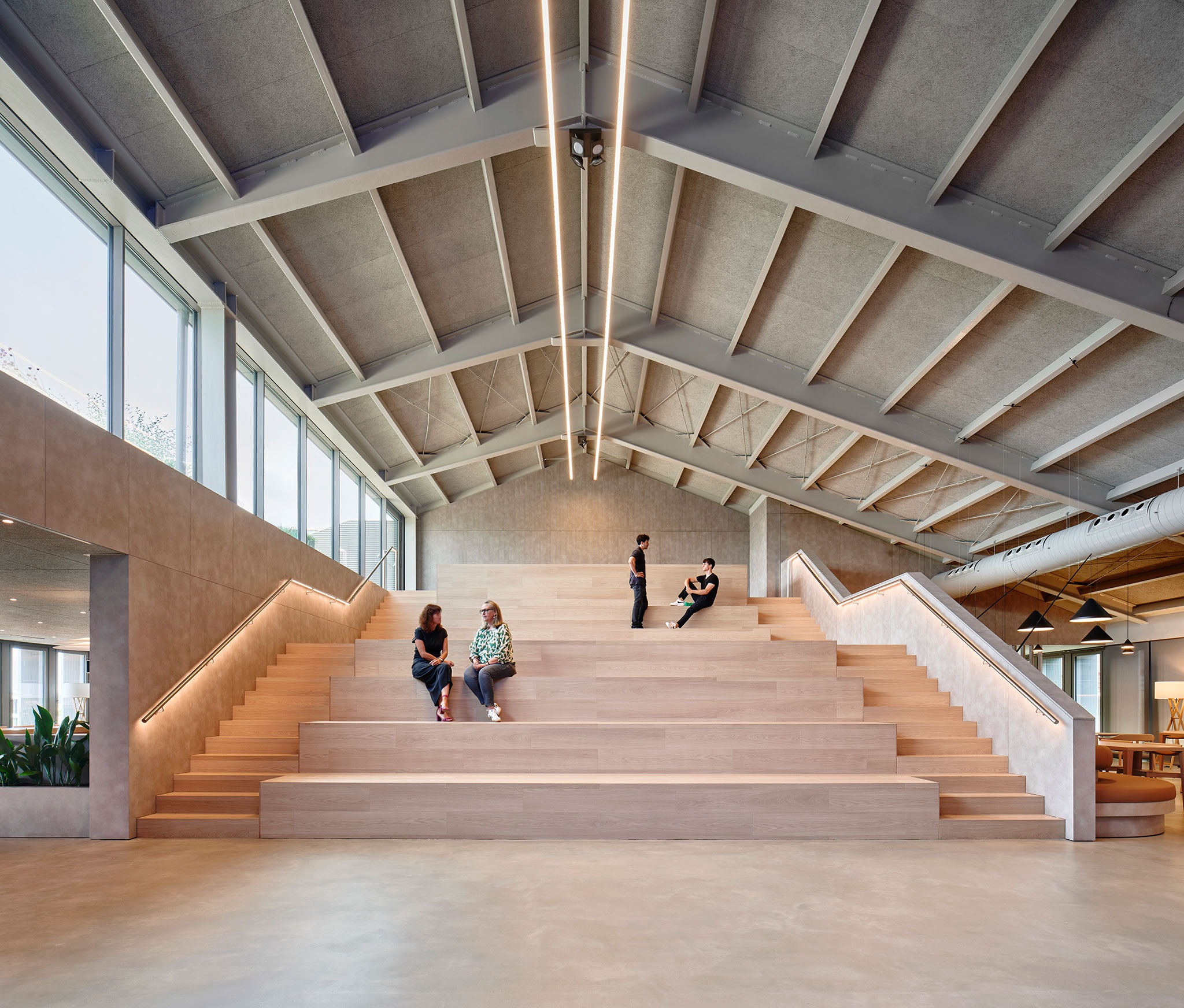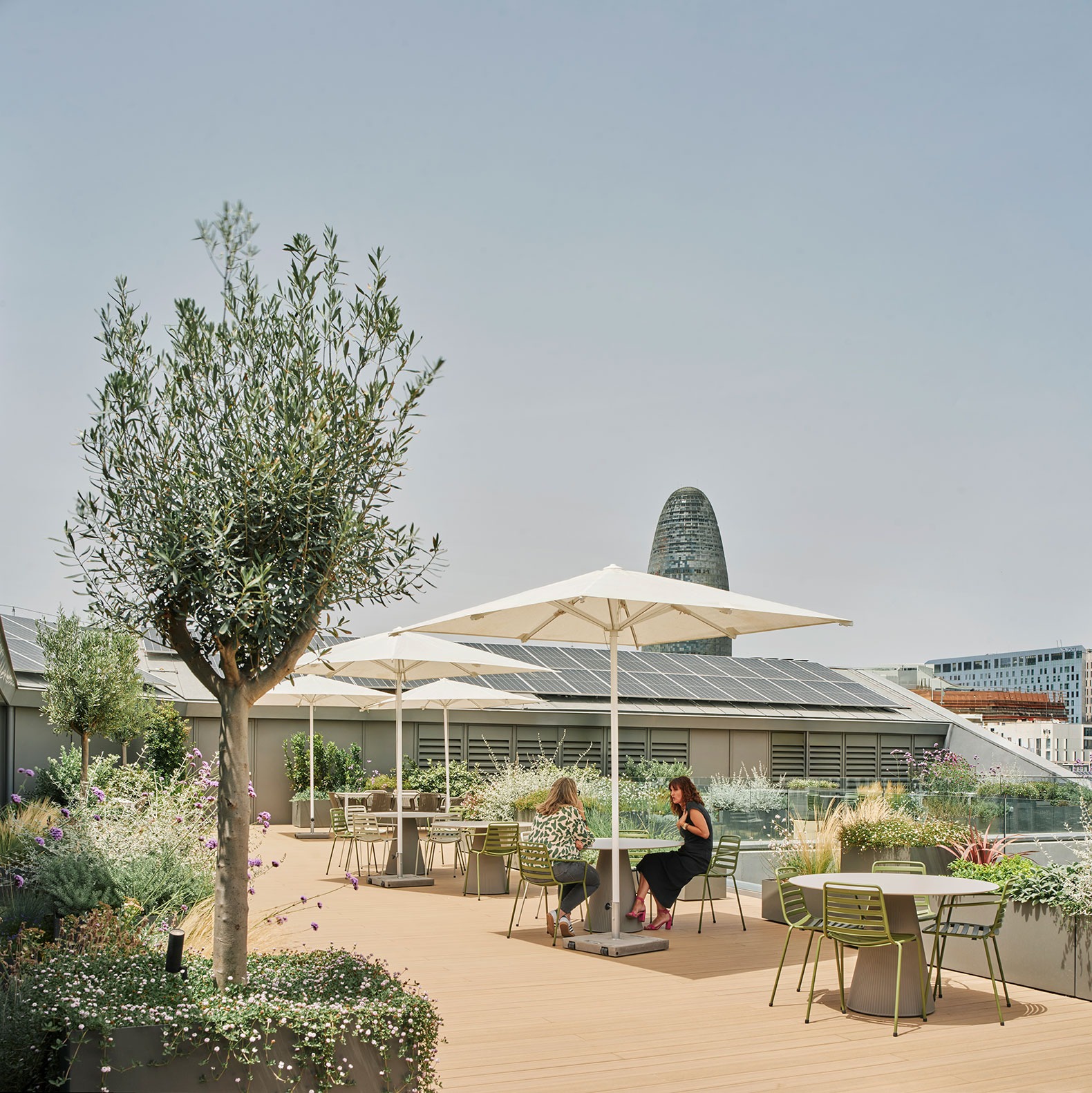
The building designed by b720 Fermín Vázquez Arquitectos attempts to take advantage of and highlight the advantages of the reticular structure of the original industrial construction made of reinforced concrete, freeing it from certain obsolete components and creating a new skin through added modules that provide the building with comfortable and high-performance spaces that highlight its materiality.
The project aims to be a reference in Barcelona's work spaces, being an activity centre that qualifies its immediate surroundings through open use to the public on the ground floors and allocating the work spaces to the upper floors, showing itself to the city in the form of large glass openings characterised by their abstract presence, depth and a play of reflections that highlights the presence of the building, from the vision of an abstract and at the same time calm façade.

SWITCH, New Simon Headquarters by b720 Fermín Vázquez Arquitectos. Photograph by José Hevia.
Project description by b720 Fermín Vázquez Arquitectos
The rehabilitation of the old Simon factory to house the new Simon Corporate Headquarters arose from the need to unify the more than 350 employees of the two previous office locations in Barcelona under the same roof. The project is based on the idea of preserving the essence of the existing construction, a concrete industrial building from the second half of the 20th century, but introducing elements that allow to identification of the new use, and to place the new Simon Corporate Headquarters in the center of the technological development of the city. The Headquarters is symbolically named SWITCH, the abbreviation for “Simon Worldwide Innovation Talent Community Hub”, and also a nod to the electrical switch, one of the trademark products of the company.
Structure
The old Simón building is essentially a concrete structure; a regular grid of porticoes, ribs and slabs in the interior and a neutral, repetitive lattice on the façade which is at once a support, a window and a sunshade. Rehabilitating the building means, to a large extent, bringing this admirable structure up to date, but with certain deficiencies typical of its age. The necessary starting point is a thorough diagnosis of the state of conservation. Based on this, the interventions are approached in a surgical manner, including the careful repair of the lesions in the concrete, the selective demolition of areas to generate new communication nuclei and work areas and the demolition and reconstruction of the parts in the worst condition, always following the original logic. The traces of this intervention are not hidden, but can be seen as nuances in the materiality of the concrete, like scars that become part of the building's history.

Facada
The project takes advantage of and highlights the potential of the existing concrete grid, freeing it from its old masonry sills and obsolete practicable closures. As a counterpoint to this clean and resounding framework, the new skin is configured by means of added modules, in the manner of ‘technological cassettes’, which are inserted between the ribs of the grid to provide it with contemporary comfort features. Thus, a deep aluminium frame protects and regulates the perimeter of the opening, integrating a glass balustrade, while the new glazed enclosure provides high insulation and solar control performance, with the frames hidden behind the perimeter mouths, thus drawing a clean void in which the light and reflections contrast and enhance the patina and materiality of the concrete.
Regeneration of the urban environment
The reconversion of the building contributes to the regeneration of the urban environment of this part of Poble Nou, now transformed into the new 22@ technological district. The recovery of the old building thus becomes a valuable link between the preservation of the neighborhood's industrial memory and its willingness to be transformed: What was once a building relatively closed off from the city becomes a hub of activity that opens to its immediate surroundings.

Thus, the first floors are open to public use, while the upper floors house the workspaces, which are open to the city through large glazed openings that are more than just windows; their abstract presence, depth, and play of reflections is complemented by the desire to serve as urban infrastructure, equipped for the installation of ephemeral assemblies, thus enhancing participation in city events such as the festival of illuminating arts "Llum BCN".
Quality of life & efficiency
SWITCH aims to be a benchmark for quality workspaces in Barcelona, as well as for the refurbishment of existing buildings and their adaptation to the highest quality standards, serving as an example for the future reconversion of many other industrial buildings.
It takes advantage of the opportunities of the original construction, an open and bright space, complemented with a new configuration of routes and vertical cores, high-performance facilities, and equipment, and the use of the roof as a playful space for gardens and renewable energy collection. Intelligent management of the building optimizes its efficiency, incorporating digital tools for the shared use of workstations, meeting rooms, common spaces, or access to mobility.

Sustainability & inclusiveness
The rehabilitation of the old building revalues and prolongs the useful life of the peculiar reinforced concrete grid that constitutes its structure and façade. The old obsolete building thus becomes a building with maximum efficiency, a fact that is expressed in the façade, where the treatment of the openings combines the concrete framework, repaired in a careful but visible way, without hiding the signs of the passage of time, with complementary elements in the form of a technological "cassette" inserted within the grid. The contrast between these elements highlights the configuration and materiality of the structural system, while providing an optimal level of natural light, solar protection, and thermal insulation.
The result is a building with a low environmental impact due to the reduction in the carbon footprint of existing materials with a long-life cycle, the new energy efficiency, and its contribution to urban regeneration and improvement of the territory. The building is in the process of obtaining LEED Platinum and Lean2Cradle certification.























































